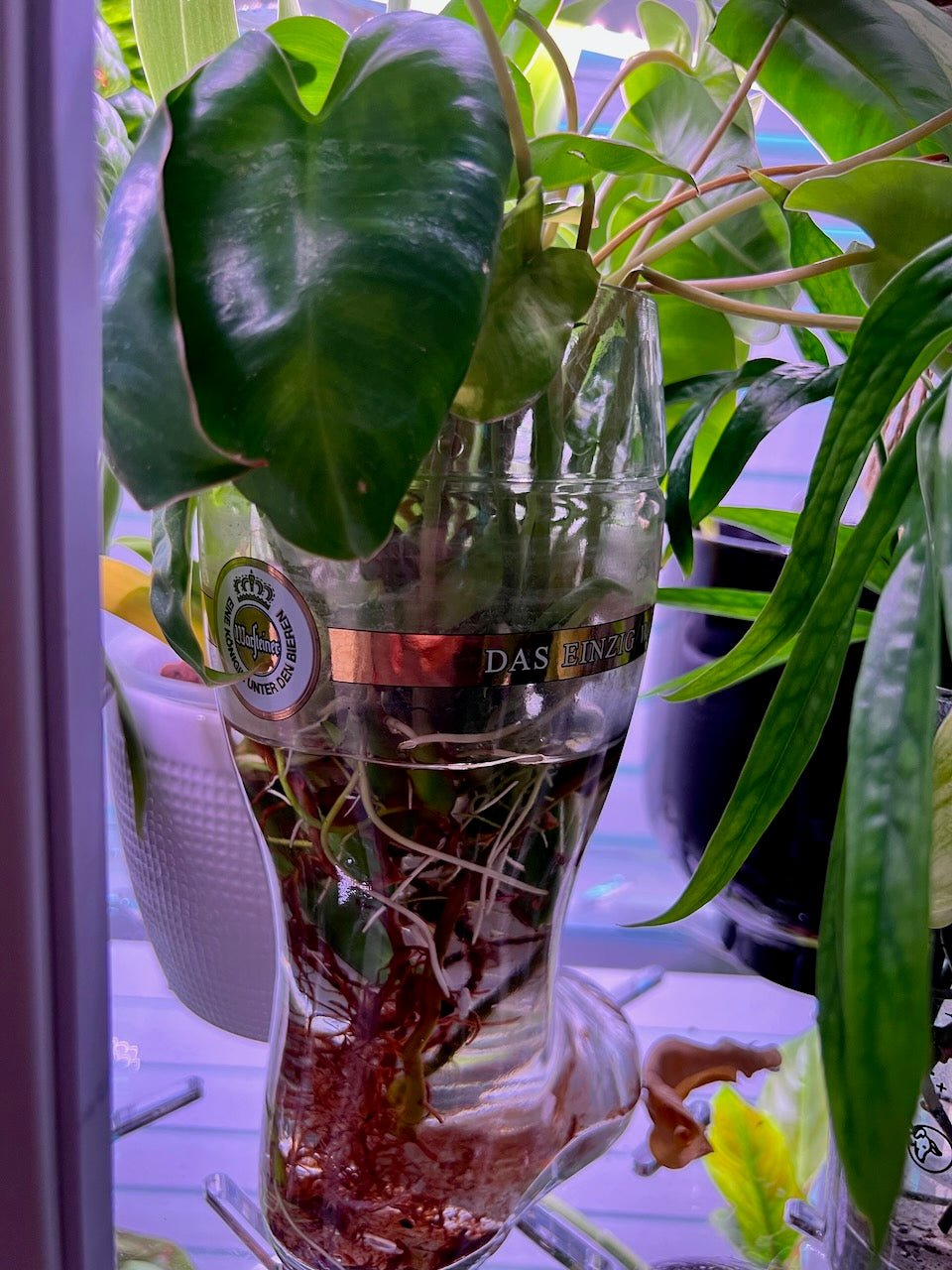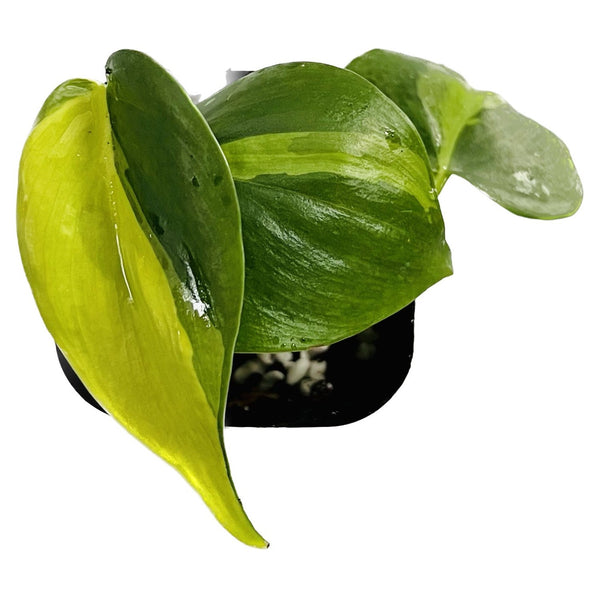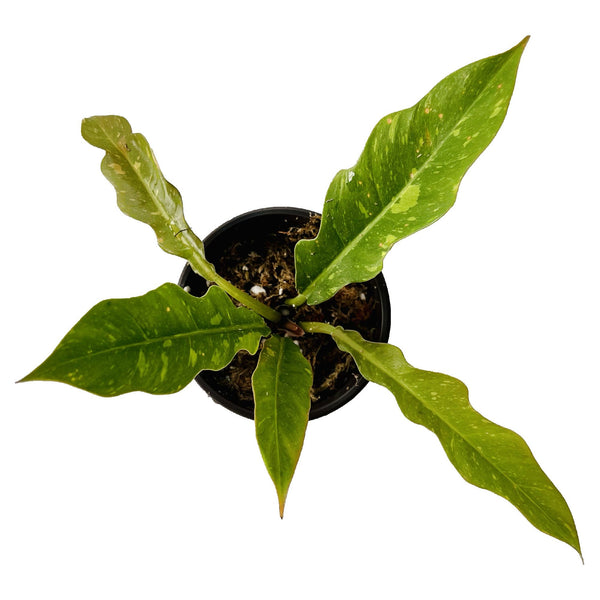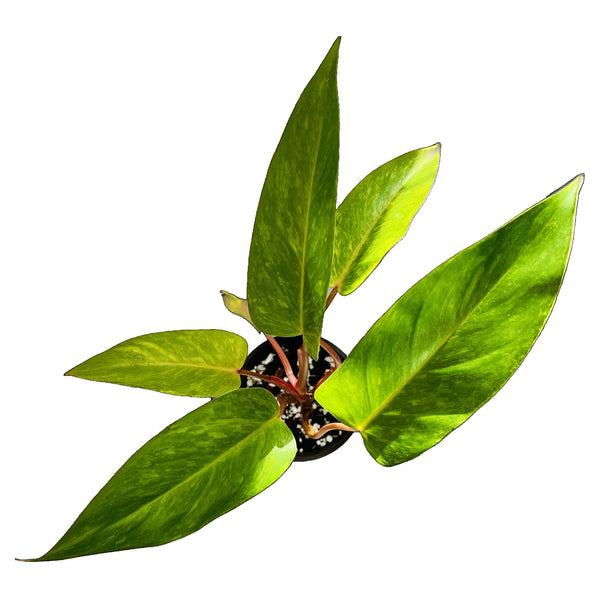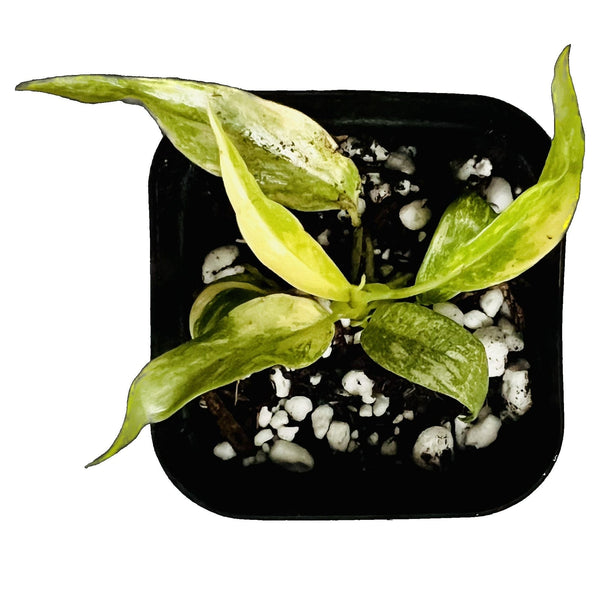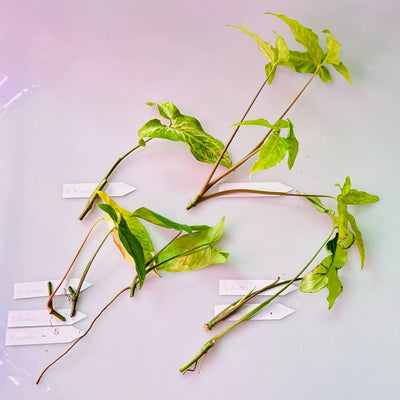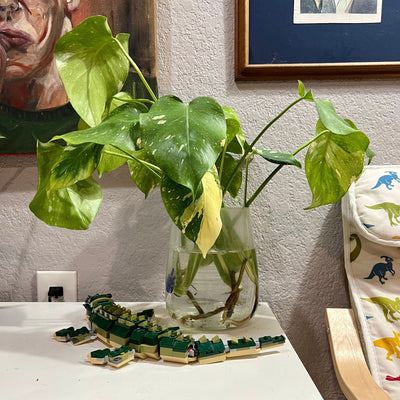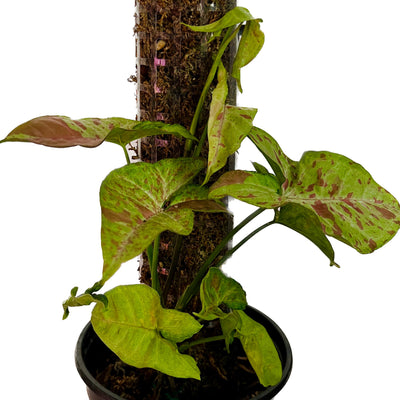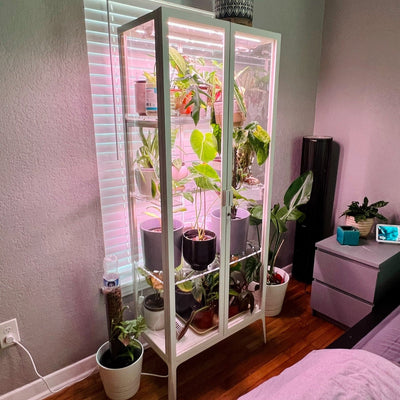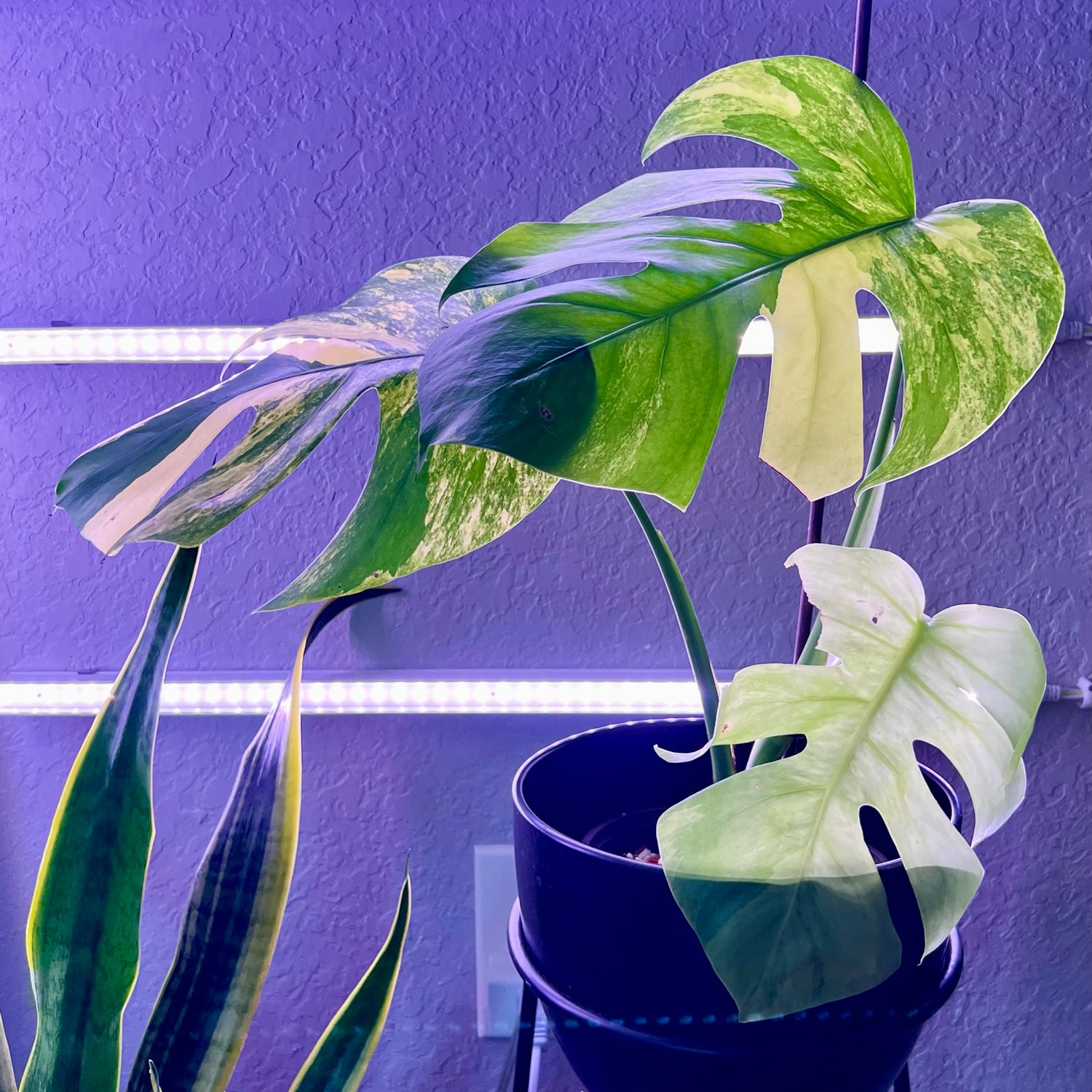Philodendrons come in a variety of shapes, sizes and colors, but most propagate the same way: via node cuttings. Heres the manner in which I clone my Philodendrons via cutting, and one which I recommend when people ask me how to propagate them.

This oversided Dark Lord, which has rooted into a moss pole is a good candidate for a chop and prop.
Choose a Healthy Parent Plant
Choose a parent plant that is healthy and free from any pests or diseases. Propagation works best when the stem has developed roots, ideally you want these as well. Most Philodendrons have singular growth patterns, they only put out new nodes when chopped. If you are taking a cutting from a big plant the resulting growth will look unsightly. For this reason I tend to sacrifice most of the plant into nodes and grow each out into its own plant.
Develop Roots Before Propagation
Crawling terrestrial philodendrons typically have multiple nodes which have rooted into the soil. Climbing epiphyte philodendrons often do not. For better success you want the plant to work on roots a bit before chopping her up. I typically use a sphagnum moss pole in order to give air roots a home - if you keep the pole damp and the stem flush with it the mother will root into the pole quite aggressively. Alternatively you can air-layer with moss starting about a month before propagating the mother plant, use plastic balls filled with moss, or for long roots gently guide into a glass of water.

Philodendrons grow from node segments, each midcut should have one node and ideally one leaf and one aerial root as well
Chop Her Up
Use a clean, sharp pair of scissors or pruning shears to cut the stem. You want your cuts to be about halfway between nodes (a node is where the leaf joins the stem). Take care at the base and top of the plant. At the base, you want to make sure to leave at least one unspent node attached to the existing root system. At the top make sure you leave a node, this one is insurance, sometimes the existing growth fails on a top cut and it activates its node.
Dry the Stems
Allow the stems to callous for 8-24 hours.
Choose Your Own Adventure

I often recycle a collection of bar glasses from my 20's to root. Shown: Philodendron Burle Marx cuttings in water.
Root in Water
Place the cutting in a vase filled with water. An air bubbler will speed things along, as will bright light. Root until secondary roots develop (usually 3-6 weeks). This is my preferred method for healthy nodes: as its fast, easy to see new roots growing, pretty forgiving, and generally looks classy compared to the alternatives.
Root in Perlite
Place the cutting in a vase filled with a few inches of perlite, pour 1/2" more perlite over the top. Add water until you have about an inch pooled at the bottom. Root until secondary roots develop (again about 3-6 weeks). This is my preferred method for nodes with some degree of rot. You can also try exotic mixes such as including sphagnum moss or fluval stratum with the perlite.
Root in Moss
Wrap the cutting damp sphagnum moss, place the resulting bundle in a nursery pot and place the pot in a high humidity environment such as a prop box. Keep the prop box in a location that receives bright, indirect light. Open for about an hour a day in order to allow airflow. Give the moss a small amount of water as needed to maintain a slight dampness. A heating mat for seeds under the box will speed things up a bit here. This method usually takes anywhere from weeks to months. I try to avoid rooting in this manner excepting for very finicky plants - because in medieval times removing roots from moss was an advanced method of torture [citation needed].

A newly planted Philodendron Elegans has the sprawling original leaf as well as a tiny new growth.
Transplant
Once roots are well developed, you can transplant the new Philodendron plant(s) into a pot with a philodendron potting mix, or some other medium of your choice. Water propagations will easily transition straight to leca. Usually the new growth will be dwarfed by the mother leaf, but will size up quickly after 2-3 leaves. The new plant often will lose the mother leaf over time.
Congratulations! You have successfully propagated your Philodendron.


